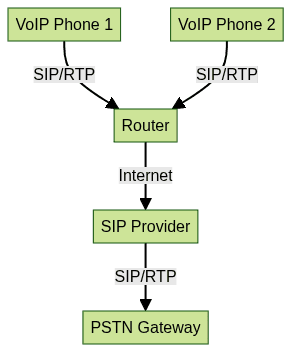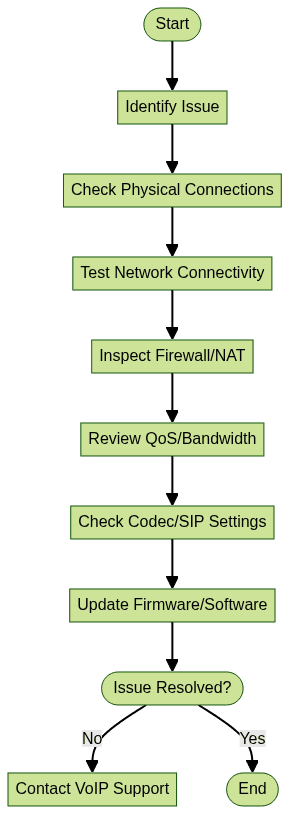VoIP Problems: Comprehensive Troubleshooting Guide for Reliable Voice Communication
Introduction to VoIP Problems
Voice over Internet Protocol (VoIP) has revolutionized business communications, offering cost-effective, flexible, and scalable voice solutions. However, as VoIP relies on internet connectivity, it introduces a unique set of challenges not typically found in traditional telephony. In today's digital-first business environment, reliable VoIP service is critical for smooth operations, customer interactions, and remote collaboration. Yet, even the best VoIP setups can experience issues—ranging from poor call quality to security vulnerabilities—that disrupt workflow and impact business reputation. Recognizing and addressing VoIP problems swiftly is essential to maintain productivity and ensure seamless communication in 2025 and beyond.
Understanding VoIP: How It Works
VoIP, or Voice over Internet Protocol, enables voice communications to be transmitted over IP networks such as the internet. Unlike legacy phone systems that use circuit-switched networks, VoIP digitizes voice signals, compresses them using codecs, and transmits them as packets. The core components of a typical VoIP setup include:
- Session Initiation Protocol (SIP): Manages call setup, modification, and termination.
- Codecs: Encode and decode audio (e.g., G.711, G.729, Opus).
- Network Infrastructure: Routers, switches, and internet connection.
- Endpoints: VoIP phones, softphones, or mobile devices.
For developers looking to integrate calling features, leveraging a
phone call api
can streamline the process of adding voice functionality to applications.
Understanding this architecture is crucial to pinpointing where VoIP problems may arise, as each component can be a source of issues related to call quality, dropped connections, or security. Additionally, using a
Voice SDK
can enhance the flexibility and scalability of your VoIP infrastructure, making it easier to build robust audio experiences.Most Common VoIP Problems
Choppy Audio and Poor Call Quality
One of the most frequent VoIP problems is degraded audio quality, characterized by choppy sound, clipping, or robotic voices. Typically, these issues stem from insufficient bandwidth, high packet loss, or network congestion. When the network cannot handle real-time voice packets efficiently, audio degrades, affecting communication clarity and user experience. If you’re developing for iOS, following a
callkit tutorial
can help you implement native call handling and improve user experience.Dropped Calls
Dropped calls often result from network instability, hardware malfunctions, or abrupt changes in bandwidth availability. Fluctuating connections or failing VoIP endpoints can cause sessions to end unexpectedly, disrupting conversations and business processes. For teams needing video capabilities, integrating a
Video Calling API
can provide both voice and video reliability in one solution.Echo and Audio Delays
Echo and noticeable audio delays are usually linked to high latency, long-distance connections, or subpar audio hardware. These problems can make conversations frustrating, as overlapping voices or repeated words hinder effective communication. Utilizing a
Voice SDK
can help reduce latency and improve real-time audio synchronization.Jitter and Packet Loss
Jitter refers to the variation in packet arrival times, leading to out-of-order or missing audio. High jitter and packet loss are frequently caused by inconsistent data flow and poor Quality of Service (QoS) configurations. This often manifests as stuttering or garbled audio. Developers can benefit from resources like a
callkit tutorial
to address these issues on mobile platforms.One-Way Audio
One-way audio occurs when only one party can hear the other. This is commonly due to firewall or Network Address Translation (NAT) issues, such as blocked or misrouted ports, which prevent RTP (Real-Time Transport Protocol) streams from reaching their destination. Leveraging a
phone call api
can help ensure more reliable call routing and minimize such issues.Troubleshooting VoIP Problems
Step-by-Step Troubleshooting Process
Effective VoIP troubleshooting starts with a systematic approach:
- Identify the Problem: Isolate symptoms (e.g., dropped calls, echo, no audio).
- Check Physical Connections: Verify cables, switches, and endpoint status.
- Test Network Connectivity: Run ping and traceroute to check for latency or packet loss.
- Inspect Firewall and NAT Settings: Ensure required ports are open and properly forwarded.
- Examine QoS and Bandwidth Usage: Confirm VoIP traffic is prioritized.
- Review Codec and SIP Settings: Ensure correct configuration for endpoints.
- Check for Firmware or Software Updates: Update VoIP phones, routers, and PBX firmware.
For those building custom solutions, learning how to
embed video calling sdk
can simplify the integration of both audio and video features into your applications.Flowchart of a basic VoIP troubleshooting process:

Fixing Network Issues
Network issues are the root of most VoIP problems. Ensure that:
- QoS is enabled to prioritize VoIP traffic over less critical data.
- Sufficient bandwidth is available for concurrent calls.
- Physical connections (Ethernet cables, switches) are intact and performing optimally.
Monitoring tools can help identify bottlenecks and optimize network health. If your business requires both audio and video communication, a
Video Calling API
can provide a seamless, unified experience.
Addressing Firewall and NAT Issues
Firewalls and NAT devices can block or misroute SIP and RTP traffic, leading to one-way audio or dropped calls. Make sure:
- Essential ports are open (SIP: 5060/5061, RTP: 10000-20000 by default).
- SIP ALG (Application Layer Gateway) is disabled if causing issues.
- NAT rules properly forward VoIP traffic to your PBX or phones.
Example: Allowing SIP on a Linux firewall (iptables):
1sudo iptables -A INPUT -p udp --dport 5060 -j ACCEPT
2sudo iptables -A INPUT -p udp --dport 10000:20000 -j ACCEPT
3Optimizing VoIP Call Quality
Quality of Service (QoS) Settings
QoS ensures VoIP traffic takes priority over other data on the network. Proper QoS configuration reduces jitter, latency, and packet loss. Modern routers allow you to:
- Classify VoIP traffic by port or protocol (SIP, RTP).
- Set higher priority queues for voice packets.
- Limit bandwidth-hogging applications during business hours.
Consult your router documentation for enabling and fine-tuning QoS for VoIP. For those interested in advanced features, exploring a
Voice SDK
can provide additional tools for managing and optimizing audio quality.Selecting the Right Codec
Choosing an appropriate codec impacts bandwidth usage and call quality. Popular codecs:
- G.711: High quality, higher bandwidth.
- G.729/G.726: Lower bandwidth, more compression.
- Opus: Adaptive, excellent for variable environments. Compatibility with endpoints and hardware is essential to avoid codec mismatches or call setup errors.
Hardware and Software Considerations
High-quality headsets and VoIP phones can significantly improve audio clarity. Always:
- Use devices certified for VoIP.
- Keep firmware updated for phones, routers, and PBXs.
- Ensure VoIP software is compatible with operating systems and peripherals.
Hardware and software mismatches can cause dropped calls, one-way audio, or poor call quality. For those building their own solutions, a
callkit tutorial
can be invaluable for ensuring compatibility and smooth integration on iOS devices.
Preventing VoIP Security Problems
VoIP systems are attractive targets for cyberattacks such as Denial of Service (DoS), toll fraud, and eavesdropping. Best practices for securing VoIP in 2025 include:
- Strong SIP authentication using complex passwords and non-default usernames.
- TLS/SRTP encryption for signaling and media.
- Regular security audits and patching of PBXs and phones.
- Restricting access to trusted IP addresses.
Example: Strong SIP authentication in a typical SIP configuration file:
1[6001]
2type=friend
3username=6001
4secret=Use$tr0ngP@ssw0rd2025
5host=dynamic
6context=from-internal
7Implementing these measures helps protect sensitive voice data and prevent unauthorized usage. If you’re seeking a comprehensive solution, a
phone call api
can offer built-in security features and simplify compliance.When to Seek Professional Help
If you consistently experience unexplained VoIP problems—such as persistent dropped calls, complex firewall or NAT issues, or signs of hacking—professional assistance may be required. Consider engaging a VoIP consultant or managed service provider if:
- Internal troubleshooting fails to resolve issues.
- You lack in-house network expertise.
- You need secure, large-scale VoIP deployments.
A reputable provider can optimize your setup and offer ongoing support for business continuity. For businesses scaling up communications, integrating a
Video Calling API
can ensure robust, enterprise-grade performance.
Conclusion: Reliable VoIP Communication
VoIP technology empowers businesses with flexible and scalable communication, but it is not without challenges. By understanding common VoIP problems, following systematic troubleshooting, optimizing your network, and upholding security best practices, you can achieve reliable and high-quality VoIP communication in 2025 and beyond. Ready to enhance your VoIP experience?
Try it for free
and discover how modern APIs and SDKs can transform your business communications.Want to level-up your learning? Subscribe now
Subscribe to our newsletter for more tech based insights
FAQ